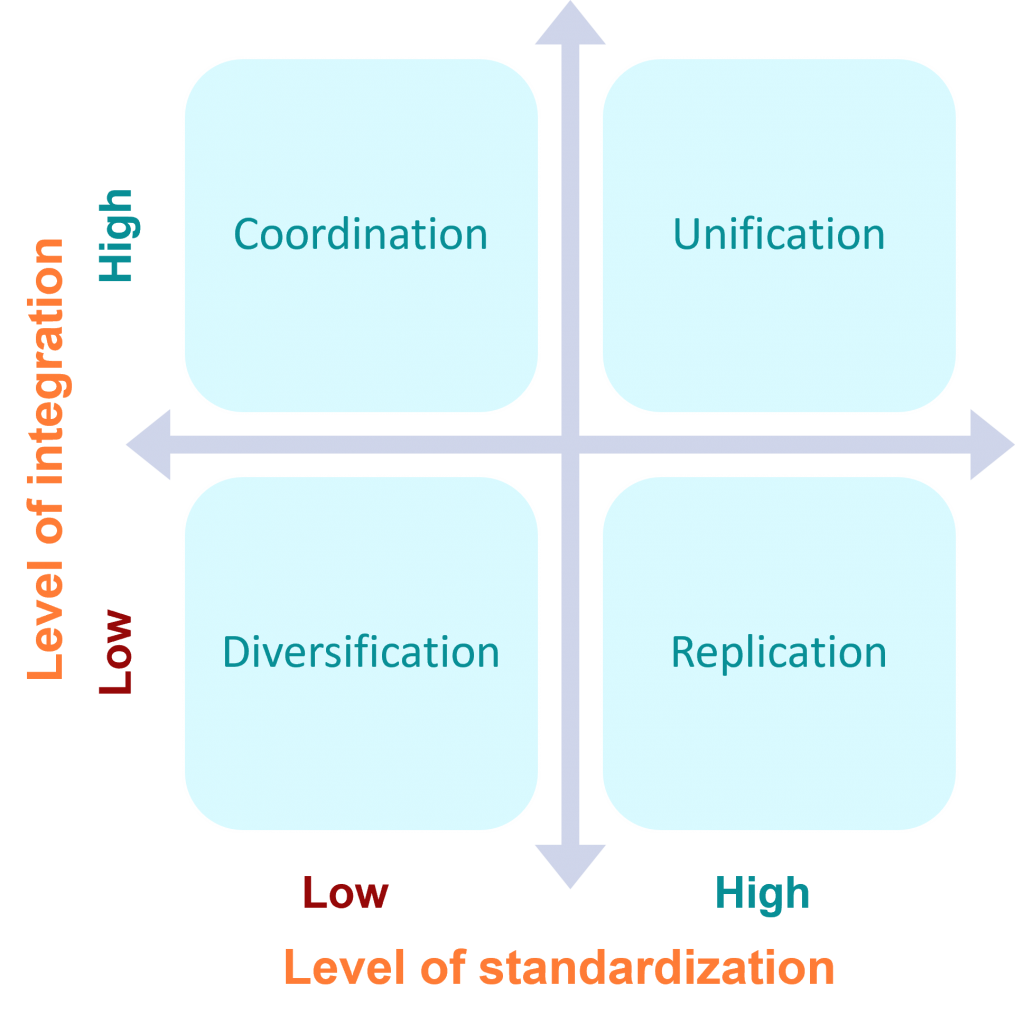How do you make sure that your IT systems help you and do not act against you?
We have IT systems but they are not helping us as we expected. What can we do about it?
Starting a digital transformation journey is a major achievement and shows great courage. However, that is when the going gets tough and only the tough get going. There is permanent change that is being pushed from both the outside (through clients, partners, competitors, regulators) and from the inside (through employees’ and shareholders’ needs) of the organization and that make this journey a continuous process.
In my previous article, I was highlighting the importance of knowing the difference between digitization, digitalization and digital transformation when defining the strategic transformation objectives of a company. In that context, the article also covered the reasons why such initiatives sometimes fail and how companies can initiate or accelerate their digital transformation.
Moving on to this current article, the focus is more on some real examples of companies that implemented digitization (automation) projects. Although they considered their projects as successful, over time they realized the projects did not delivered the benefits they expected. Nevertheless, these companies deserve our appreciation as they did not wait for the perfect conditions to start such initiatives and acted to the best of their knowledge, given the available information at that time. Moreover, they understood that technical solutions need periodical adjustments to stay relevant on the long term.
I believe it is important for us to learn from these experiences. At the same time we have to arm ourselves with the required knowledge to reduce the risks of such events or to be prepared to adapt to new challenges. Thus, I will first address 4 key perspectives, based on best practices, that will help us better understand the changing dynamics during the implementation and post implementation phases of digital transformation initiatives.
1. The motivation behind these projects. The most common ones are:
a) Productivity increase – to achieve more with the existing resources or to use less resources for the same level of output
b) Reduction of time required for transaction processing and service/product deliver
c) Quality increase – including reduction of errors and mistakes
d) Improving of safety conditions – for employees, clients, and the public
e) Increase of the time allocated by employees to creative, value adding activities
2. Areas that will be affected. Independent of the proposed objectives, the following categories will be affected by automation and digitalization projects, and will require change:
a) People: new roles and responsibilities, additional skills, new reporting rules. This means that the people in the organization need to have the trust, motivation, knowledge, and instruments to accept the additional effort required for the transition
b) Processes: The transformation of (semi)manual activities into digital ones will generate new workflows (although not always entirely new). The new way of working needs to be communicated very clearly, in a sustained manner, at all management levels so that the information reaches all the involved personnel
c) Technology: Automation involves the use of new technologies. These can be provided by internal IT functions, 3rd parties or a mix of both. In all cases, it is crucial to establish adequate communication channels with clear roles and responsibilities to have an efficient collaboration (internally and externally)
3. Operating model
I have mentioned in the previous article, the principles that help us choose the scope and processes of digitization initiatives. Going a bit further, it is also helpful for complex organizations, to consider an additional dimension, the operating model.
To reach the objectives stated at point 1 above, it would be helpful to have a reference point when asking the following questions: “What is the adequate level of process standardization and to what extent should our business units be integrated in order to reach our objectives?”
Unfortunately, there is no straight answer for this. However, there are operating models that can guide companies in the right direction. I will address 4 operating models defined by different levels of standardization and integration:

- Diversification: Business Units are completely independent with different clients and expertise. Examples: Holding type of organizations that oversee businesses that operate in a completely independent way
- Unification: On the other side of the spectrum, there is full standardization and integration of processes and data. It is not likely that this situation happens in reality, however, there are organizations that are guided by this model (e.g. in the aviation industry, international Hotel chains, international retailers etc.)
- Replication: Different business units (with few shared customers), that use the same best practices and standards but in an independent way
- Coordination: Communication is the name of the game. The information flow, databases, client profiles, operations are all easy to access by the business units. However, they choose their own processes for conducting their business
The discussion around how to choose the right operating model is a complex one, but the following thought is worth remembering: The right operating model (or the right levels of standardization and integration) for a company is the one in which it uses its’ competitive advantage to create value for its customers who are willing to pay for it and are satisfied by it. I personally concur with the opinion of Frans van Houten, CEO of Royal Philips, opinion that some complexity is rewarded, and some complexity is not. The idea is to eliminate unrewarded complexity by standardization (“simplification”), integration and automation.
4. The way we define success for digitization and automation projects
There are different ways to define success and many indicators that can be measured to evaluate the impact of such projects. The set of indicators and the measurement methods differ for each organization and industry. Nevertheless, I propose a set of questions that can help you in identifying the right indicators for evaluating the success of such projects in your organization:
a) Do your processes ensure end to end transaction processing with no interruptions?
b) Does the system enable a single source of truth for your data?
c) Does the system provide transparency and accessibility into core operations?
d) Are all repetitive, routine tasks automated so that more time can be allocated to value adding activities?
It might seem that the best practices mentioned in this article are obvious and easy to put in practice. However, very few companies achieve this. Moreover, it is possible for the operating model to change over time, thus the existing solutions might not be enough for the current business activity.
Some of Enovise Present’s clients also faced such challenges. Below you can find out how we helped them in tackling these challenges.
Example 1:
Client: Top 3 international retail client in Romania
Objective
The client wanted to align its internal processes with the existing ERP procurement solution that was not properly utilized. In addition, they wanted to increase employee utilization of the ERP system.
Solutions provided by Enovise Present
Our approach covered the 4 key principles mentioned above in the following activities:
- Business process analysis and documentation
- Analysis of process interruptions and avoidance cases (incl. employee resistance to change)
- Analysis of data types, storage methods and utilization
- Identification of manual activities and the causes for it
- Analysis of the reporting processes
- Mapping of internal processes with the existing ERP solution
Deliverables
- Identified the causes for not properly using the existing ERP solution
- Defined measures to align internal processes with the ERP system
Example 2:
Client: Grup Servicii Petroliere (Offshore integrated service provider for the Oil & Gas industry)
Grup Servicii Petroliere (GSP), one of the major Oil & Gas players at the Black Sea, was established in 2004, as a Romanian private entity. GSP started as a drilling contractor, and since then it has been continuously investing in expanding its range of services. Today, GSP has the capabilities to cover an extensive range of services, from drilling and greenfield developments to asset management of brownfields.
Context:
In June 2019, GSP Offshore SRL has signed the Framework Agreement for Integrated Offshore Services (IOS) of the facilities and equipment of OMV Petrom’s Upstream Division in Asset X. As general contractor, GSP has integrated a series of services that includes onshore and offshore operations and maintenance, as well as harbour operations, maritime transportation, aviation services and other support services.
Obiective
GSP wanted to successfully deliver the services to reach contractual targets and to increase operational performance levels.
Solutions for digitization provided by Enovise Present:
Our approach covered the 4 key principles mentioned above in the following activities:
- 360 degrees-type organizational capability assessment
- Analysis, coordination, and support during the handover of activities
- Mapping of internal processes with the existing ERP solution and with the systems to be integrated
- Project Management and PMO
Deliverables
- IT system diagnosis and identified measures required for delivering the new business model. This enabled the transition from a mainly “Replication” model towards the “Coordination” and ”Unification” models, that were more suitable for delivering the contract
- Defined key performance indicators for contract success and implementation of a contract performance management system

If the situations described in this article speak to you and you are aiming to advance the digital transformation in your company, I invite you to an in-depth discussion on these topics. We would be excited to help you along this fascinating journey! You can contact us directly on Linkedin or at the following email addresses: ionutzaharia@enovisepresent.com or adrian.banciu@enovisepresent.com.
More information and articles on digitization, digitalization and innovation topics can be found here: https://enovisepresent.com/en/news/.
